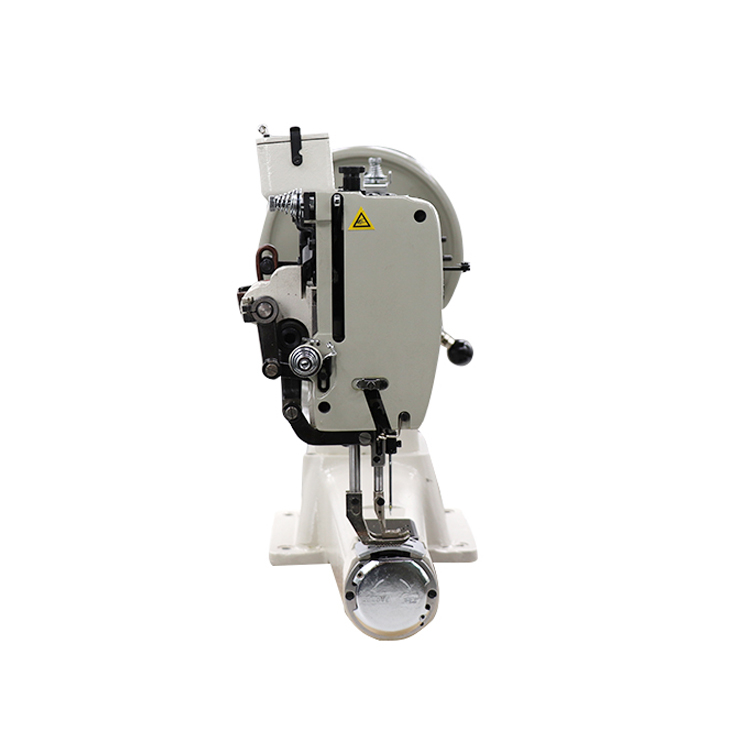Straight Stitch and Zigzag Capabilities of Industrial Sewing Machines for Versatile Sewing Needs
Understanding Industrial Sewing Machines Straight Stitch and Zigzag Functions
Industrial sewing machines are the backbone of the textile and garment industry, providing the speed and durability necessary for large-scale production. Among the various types of industrial machines, straight stitch and zigzag stitch machines are fundamental. Each serves distinct purposes and is integral to various sewing applications.
The Straight Stitch Machine
The straight stitch sewing machine is the most basic type of industrial sewing machine, yet it is incredibly versatile. This machine is designed to produce a straight, linear stitch, which is essential for many sewing operations. The straight stitch is characterized by its simplicity and strength, making it ideal for sewing seams in clothing, quilting, and a host of other textile projects.
One of the main advantages of a straight stitch machine is its efficiency. These machines can sew at high speeds, reaching up to 5,000 stitches per minute, which is crucial for meeting production deadlines. The straight stitch is typically used for creating strong seams, particularly in woven fabrics. It is also advantageous when stitching heavy materials, as it produces a consistent line of stitching that enhances the overall durability of the fabric.
Operators often optimize straight stitch machines with various needle types and thread options, allowing for customization based on the fabric and project requirements. For instance, using a heavier needle and thicker thread enables better handling of thicker fabrics like denim. With its robustness and user-friendly nature, the straight stitch machine remains a staple in factory environments worldwide.
The Zigzag Stitch Machine
In contrast, the zigzag stitch sewing machine offers versatility beyond what is achievable with a straight stitch. The zigzag stitch can create a series of tight, decorative stitches, typically used for finishing edges, applying appliqué, and various types of embellishments. This machine allows for adjustable stitch width and length, accommodating diverse sewing tasks.
industrial sewing machine straight stitch and zig zag

One of the critical functions of the zigzag stitch is its ability to facilitate stretch in fabrics. This is particularly important when working with knits and elastic materials, where the straight stitch may not provide sufficient flexibility. The zigzag stitch can prevent fabric edges from fraying, making it an essential tool for constructing seams that require give, especially in activewear and swimwear.
Moreover, the zigzag stitch can be adapted for various techniques, including quilting, decorative stitching, and hemming. This adaptability makes the zigzag machine a favored choice among professional tailors and hobbyists alike. Its user-friendly interface, combined with programmable settings in more advanced machines, empowers users to experiment with different stitching styles and patterns.
Choosing Between the Two
The decision to use a straight stitch or zigzag stitch machine often depends on the specific needs of a project. For basic seam construction and high-volume production of tailored garments, the straight stitch machine is often the better choice due to its speed and strength. Conversely, for projects requiring flexibility, decorative elements, or edge finishing, the zigzag machine is invaluable.
Additionally, many modern industrial sewing setups incorporate both types of machines to streamline production processes. By having the ability to switch seamlessly between straight and zigzag stitches, businesses can optimize workflow while maintaining versatility in design.
Conclusion
In conclusion, both straight stitch and zigzag stitch industrial sewing machines play pivotal roles in the fabric and apparel manufacturing sectors. Understanding the capabilities and appropriate applications of each machine is crucial for maximizing productivity and ensuring the quality of finished products. As technology continues to evolve, these machines will adapt, but their fundamental importance in the sewing industry will remain unchanged. For any serious sewing professional or business, mastering both types of machines is essential for achieving the best results in their craft.
-
Heavy Duty Leather Sewing Machine: A Must-Have for Professional LeatherworkNewsMay.28,2025
-
Leather Sewing Machine: Essential for High-Quality LeathercraftNewsMay.28,2025
-
Extra Heavy Duty Sewing Machine for Premium Leather ApplicationsNewsMay.28,2025
-
Walking Foot Cylinder Arm Sewing Machine: Precision and Power CombinedNewsMay.28,2025
-
Industrial Cylinder Arm Sewing Machine: Engineered for High-Performance StitchingNewsMay.28,2025
-
Cylinder Bed Sewing Machine: A Powerful Solution for Precision StitchingNewsMay.28,2025
-
Zigzag Sewing MachineNewsMay.12,2025





























